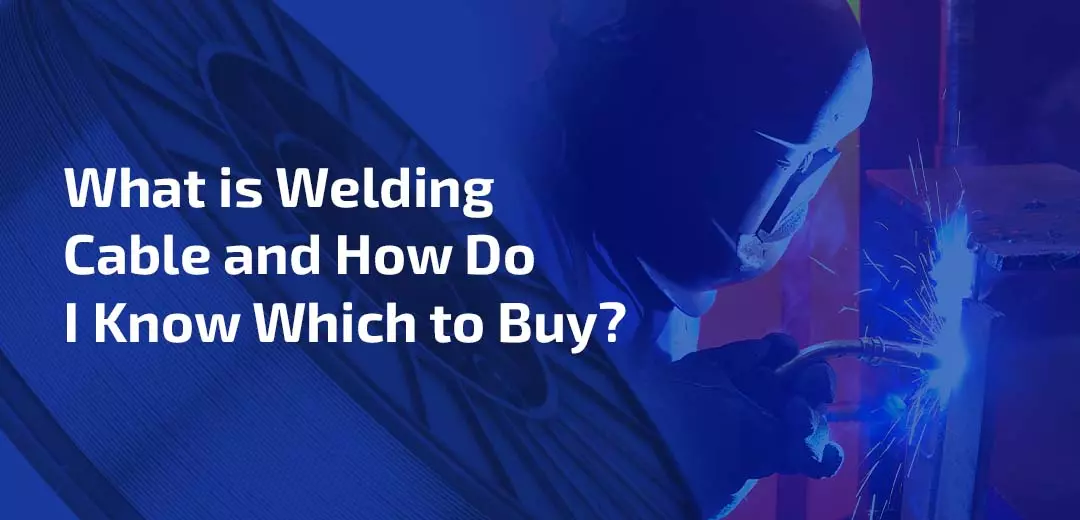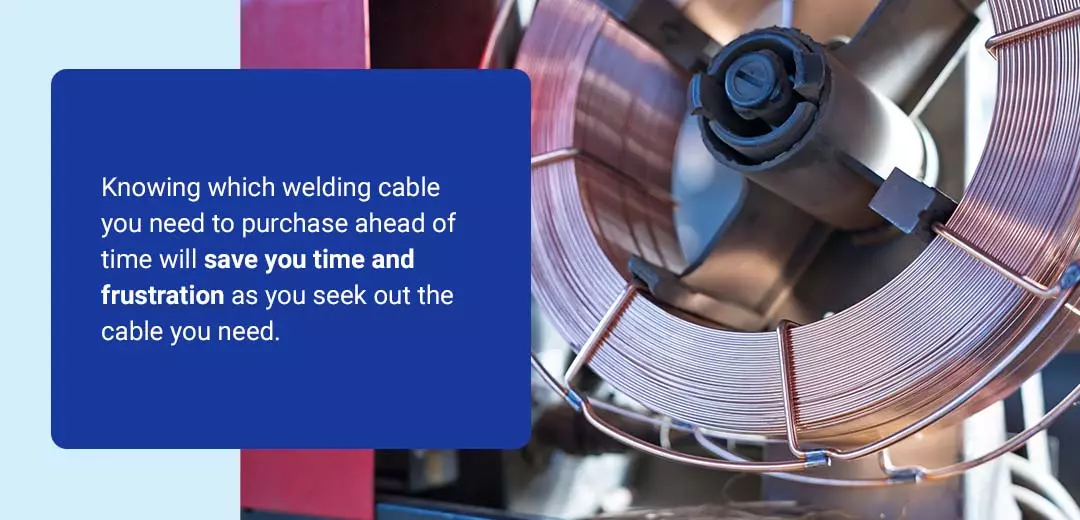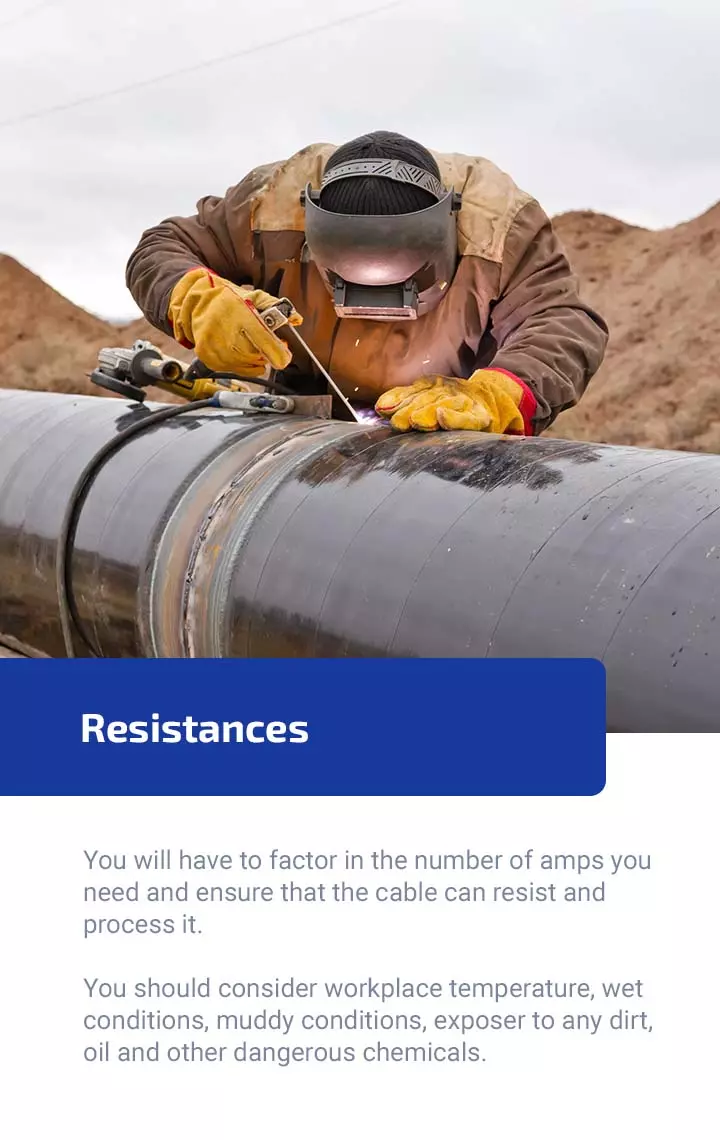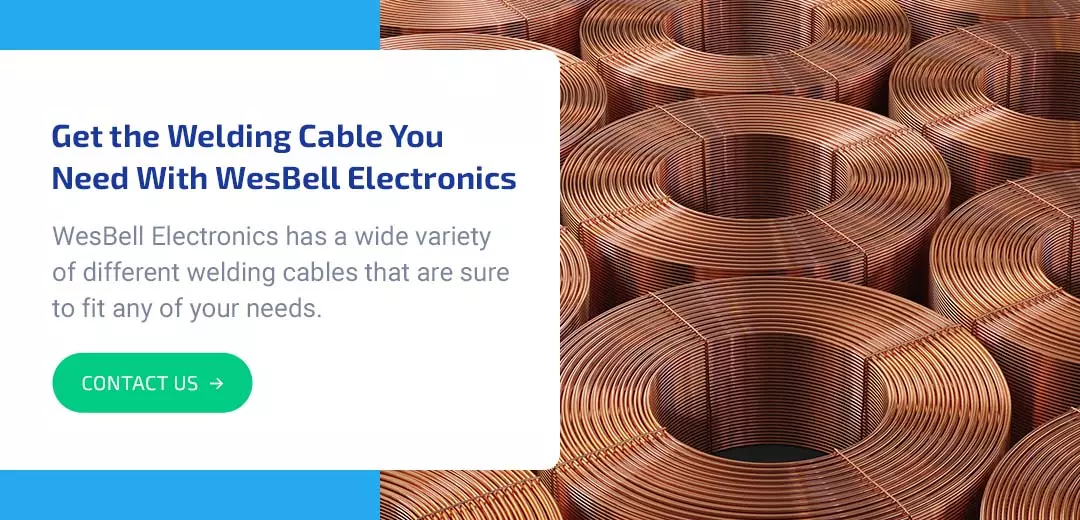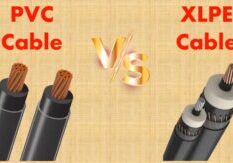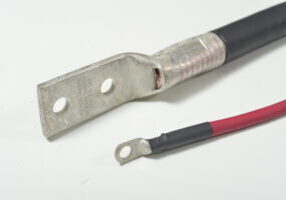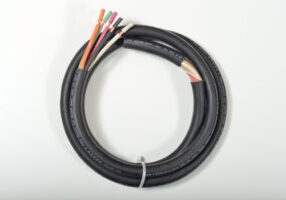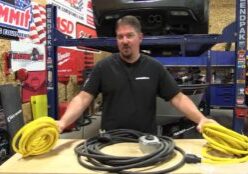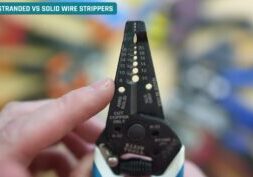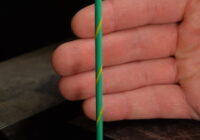
Jun 21, 2023
What is Welding Cable and How Do I Know Which to Buy?
- What is Welding Cable?
- Why Buy Welding Cable? The Benefits of Welding Cable
- Knowing Which Welding Cable to Purchase
- Welding Cable Alternatives
Whether we like it or not, sometimes our machines fall apart. The wires fail to send electricity through them to power the machine or some other mechanical breakage causes the machine to malfunction. Whatever the situation, spending the sudden extra money to replace a machine is costly, stressful and frustrating. Fortunately, all is not lost. In some situations, the welding cable is to blame for the machine’s inability to function properly. Stress, overuse or other outside force causes the wires leading up from the outlet to the machine to break.
When troubleshooting your welding unit, check the wires and cables for any sign of fraying, exposed wires or deep creases in the wire covering. If you notice any damage, then odds are that your welding cable does not function due to its wires. As long as you know what you are doing or have a handy guide to assist you, you can easily replace the wire without having to spend excess money on a brand-new arc welder.
Welding cable comes in a sizable selection of thickness, length of cable, durabilities and a host of other features. Unless you know what you need, you will surely become lost in the sea of cables. If you’re purchasing in person, you might get lucky enough to find someone who knows more about welding cables and can better assist you, but if you need to shop online, you will have to spend some time doing your research and understanding the different restrictions and requirements with welding cables.
What is Welding Cable?
Welding is a common task for many fields and industries, requiring a lot of power to get the job done. You need a strong, specialized cable to get all that power to your welding setup. Fortunately, welding cable is straightforward and provides all the strength and flexibility necessary for the task.
On the surface, the welding cable connects the outlet to the machine, allowing electrical currents to pass through. It is the most popular form of cable in the welding community, and it is the most portable and versatile compared to other types of cable. Even so, welding cables are a little more complex than they may appear on the surface.
Welding cable comprises copper strandings, which offer the flexibility necessary in welding environments and exceptional conductive properties. This portable power cable is commonly used for power supply applications and secondary voltage resistance welding leads. The cable’s copper strands grant it exceptional flexibility, making it portable and highly versatile.
Welding Cable Sizes
Our welding cable supports flexibility by using 30 American Wire Gauge (AWG) bare copper strands. Common AWG sizes are 6, 4, 2, 1, 1/0, 2/0, 3/0, and 4/0. Around these copper strandings are rubber insulation and a non-conductive jacket for added durability. This jacket is made of ethylene propylene diene monomer (EPDM) and designed to stand up to being dragged across a shop floor or over abrasive materials. It provides extensive protection in industrial environments, making these cables a great choice for commercial work. In addition to EDPM, you might find this cable with a neoprene jacket.
This construction grants welding cable a wide range of characteristics. It has a 600-volt capacity, capable of supporting many different welding tasks for both alternating currents (AC) and direct currents (DC). It also has a temperature rating of up to 90℃ and a vast selection of sizes.
Coating and Insulation
Welding cable comes with four different types of coating or insulation material:
- Neoprene
- EPDM (ethylene propylene diene monomer)
- CPE (chlorinated polyethylene)
- PVC
Typically, you will find welding cable made from the first two materials, neoprene and EPDM, although you may also see the name thermoset as an alternative for these two. If you are specifically looking for an EPDM-coated welding cable, you can verify what type of thermoset the cable uses.
Because manufacturers tend to refer to neoprene and EPDM as thermosets, they function almost identically. Both materials are highly flexible, so you can move them around a workshop or obstacles without worrying too much about resistance. These two coatings are also highly resistant to harsh weather, water, moisture and abrasions. However, these two coatings do not hold up when it comes to gas or petroleum-based liquid exposure. You should consider using an alternative coating if you work in an environment with either element.
PVC is much stiffer than neoprene and EPDM. The stiffness gives the welding cable more durability and better resistance to cuts, tears and wire bends. If you are more aggressive on your cables than you would prefer, you might consider opting for the PVC welding cable. Alternatively, you can utilize the PVC coating if you spend more time inside a workshop welding.
Interior Metal
The welding cable you will specifically use for welding machines will come with a copper conductor. Copper is one of the more flexible and durable metals when it comes to conducting electricity and withstanding heat. When you run a current through the copper cable, the electricity heats the copper, which causes the welding machine to have the heat it requires to weld. Copper can easily withstand most welding situations without difficulties.
Why Buy Welding Cable? The Benefits of Welding Cable
Welding cable is a one-of-a-kind cable because its name immediately tells you what it’s for. If you wanted electrical wire, you must answer about five more questions before finding what you need. You could be looking for thermoplastic, high-heat, nylon-coated (THHN) wire, Romex®, underground feeder (UFB) cable and even service entrance cable. They each have their own function for different applications.
If someone calls looking for welding cable, we only need to ask how flexible they want it. Standard welding cable is already very flexible compared to electrical wire or power cables. This flexible welding cable, which comes in an orange jacket, is called Super Vu-Tron welding cable.
This cable has smaller strands that make it more flexible and a more rugged outer jacket to protect against daily industrial damage. It is used on job sites to run very large welders or as a power cable supplying power to generators and industrial machinery. This welding cable is frequently run over and dragged around job sites, so it needs extra protection.
Welding cable can carry several different approvals, including those from:
- The Mine Safety and Health Administration (MSHA).
- The Council on the Restriction of Hazardous Substances (RoHS).
- UL LLC.
- The CSA Group.
We carry flexible copper welding cable, a rubber-insulated cable to hook up welders in shops and garages. Industrial-grade welding cable has UL, CSA and MSHA approvals and a more rugged jacket to handle daily impact.
Not all welding cables have approval from outside organizations. If you need certain approvals, learn which type of cable you need:
- Standard welding cable: Standard welding cable is not UL or CSA approved but it is MSHA- and RoHS-approved. Typically, welding cable is used by homeowners and small shops to supply power to a welder or small 600-volt machine. The cable has protective insulation so it doesn’t rip or tear when dragged along the shop or garage floor.
- UL-approved welding cable: UL LLC double-checks the attributes that are listed on wire and cable. Therefore, UL tests and approves the Super Vu-Tron welding cable to perform to the standards that are presented on the spec sheet. Super Vu-Tron is an upgraded welding cable mostly used in industrial applications supplying power to larger machines requiring more protection.
Knowing Which Welding Cable to Purchase
Choosing which welding cable you need is no easy feat. Do not expect to arrive at a home improvement store and decide what you need from there. Knowing which welding cable you need to purchase ahead of time will save you time and frustration as you seek out the cable you need. Several factors must be considered when identifying the exact type of cable you require.
Rating
Before you begin to seek out a welding cable, you must know exactly what rating you need it to adhere to. You will want a cable rated to the correct voltage you require and that can carry the electrical current safely and effectively. When determining what voltage you need, you must ensure your equipment can also safely and adequately utilize that energy.
Knowing what type of rating you need requires extensive knowledge of the task ahead of you. You will need to have a deep understanding of the welding project, the power needed and the rating of the welding cable. Knowing this information is entirely up to you, and while it might be tempting to purchase your welding cable blind to this knowledge, you should take the time to figure out what rating you will need.
Length
You might think that the length of the welding cable shouldn’t matter too much. You would think that the longer the cable, the better. It will give you better access to the areas around you while welding. However, the opposite is better. You want a welding cable close to the exact length you’ll need from the outlet to the item you are welding. In other words, the shorter the welding cable, the better.
When you need to buy a new welding cable, you will need to know the total length of the welding circuit. This length is the entire path the electricity travels while in use. The circuit includes the distance from the welding machine, the welding turn or electrode holder, the work cable, the work clamp, and the stick electrode or wire.
In most situations, you’ll have two cables — one that connects the welder to the electrode and another to the welder to the work clamp. The electrical current has to travel between both cables and output enough energy by the time you need it. All welding cables use copper because of its low resistance. However, some resistance still exists. Longer welding cables must send the electrical current through more copper, which causes the initial amperage to decrease by the time it reaches the end of the line. Shorter cables do not lose as much because the current has to travel a much shorter distance.
Welding Cable Ampacity, Gauge and Thickness
The ampacity of your welding cable refers to the maximum amount of electrical current that the cable can safely transfer. The higher the ampacity, the more current the welding cable can conduct. If you require a certain amperage to perform your task properly, make sure that the cable can reach the maximum.
Ampacity also tells you how much current your welding cable can withstand before it overheats and shuts down. You might also see the ampacity referred to as a capacity rating. The capacity rating is the percentage of current your welding cable that can be used within a ten-minute period before it overheats and shuts down. The alternative name is essentially the same information, but you’ll see it as a percentage rather than a number with the abbreviation AWG.
The cable’s length also directly affects how much amperage you have at the end of the line. The longer the cable, the less amperage you will have at the end. If you need a longer cable, you should purchase one with a higher amperage, so by the time it reaches the arc welder, you will have enough amps. On the other hand, you can choose to use a shorter cable to achieve similar results. In this case, you should get as close as possible to the amperage you need with the cable.
The gauge of your welding cable is another name for the thickness and amount of amperages the cable can conduct. The higher the gauge, the thicker the cable and the more you can conduct.
Flexibility and Stranding
Flexibility is one of the most important aspects to consider when choosing a welding cable. Depending on the environment you work in, you will want to consider whether you require a more flexible cable to help you maneuver around objects or if you can utilize a less flexible one. However, you should always consider a more flexible welding cable over a stiffer one. While welding, you are constantly moving around, and your welding cable needs to keep up with the constant movement.
The strand count of a welding cable is directly related to the flexibility of the copper wire inside. The more copper strands inside the cable, the more flexible it becomes. As manufacturers add more strands, the thickness of the welding cable remains the same, but the strands become thinner, giving the cable more durability, flexibility, and higher AWG.
When you shop for welding cable, you’ll notice two primary pieces of information. You’ll see either Class K or Class M, which refers to the strand count of the cable.
- Class K: Class K welding cable has 30 AWG strands, typical of this wire.
- Class M: This wire uses 34 AWG strands for durability and flexibility. This type of cable usually costs more and features a brightly colored jacket.
Class K has a smaller strand count and comes with a 30 AWG, but it is also the most commonly used class. Class M will have more strands and comes with 34 AWG. As such, the higher the AWG, the more durable and flexible the cable. Both offer the design of welding cable intended for use with connections from the electrode holder and clamp to an arc welder, bus, welding box, or transformer. Be cautious, as some companies advertise their standard welding cable as Super-Flex or Ultra Flex even when they sell a normal count welding cable.
Resistances
You will have to take into account the situation, project type, and environment in which you will be working. Depending on the situation, you should opt for a welding cable that’s highly resistant to outside forces or accidental bending and cutting.
Neoprene, EPDM, CPE, and PVC are the most common insulation materials used in welding cables. Each has a unique set of resistances and durability. Before you purchase any welding cable, always double-check the insulation material and whether it will be the best option for your welding project.
You must factor in the number of amps you need and ensure the cable can resist and process it. You should consider workplace temperature, wet conditions, muddy conditions, and exposure to any dirt, oil, and other dangerous chemicals. You do not want a coating that deteriorates against a certain chemical. This situation can lead to exposed copper wires, which can cause fires or electrocution.
Duty Cycle
To choose the right welding cable, you may also want to consider the duty cycle of the power source you’re using. This number is a percentage of a 10-minute period in which the power source can operate at a certain output level. The power source typically overheats past this level and, if overload protection is in place, shuts down. The duty cycle is related to the type of work you’re doing. You can usually find the duty cycle listed on the power source’s nameplate or in the manual.
Color
In general, color does not directly affect the use of the wire. More than anything, you will want different-colored welding cables to more easily identify which cable is connected to which machine. Having designated colors will help in emergencies when you have to unplug or identify which welding cable or machine is causing the malfunction.
You can usually find welding cables with insulation sleeves in yellow, blue, green, red, or black. Some cables, such as a Class M UL/CSA 600V welding cable, have a distinct color. The Class M cable typically has orange-coated insulation.
Welding Cable Alternatives
If welding cable doesn’t seem to be the right choice for you based on what you’ve learned, there are a few other cables that work similarly:
- Battery cable: You definitely can’t confuse welding cable with battery cable. Battery cables don’t need to be made flexible or tough because they are made for different applications that don’t require those characteristics. Battery cable also has a polyvinyl chloride (PVC) jacket which doesn’t compare to the welding cable’s rubber jacket. You will find that the battery cable is much cheaper, and you can see why if you use it.
- DLO cable: If you need a high-voltage cable, consider a DLO cable. It is a little bit less flexible, but it has a 2,000-volt rating instead of the welding cable’s 600 volts.
- Type W: The Type W power cable also has a higher voltage rating and is multi-conductor. It is like an industrial-size extension cord used in very high-power applications.
Get the Welding Cable You Need With WesBell Electronics
Nothing is more frustrating than being unable to weld because you don’t have the proper welding cable on hand or your local home improvement store does not carry the specific cable you need. Rather than traveling to various stores at the last minute and halting the process of your project, use the above information to deduce which type of cable will best work for you and purchase it ahead of time.
Instead of stressing over the welding cable, purchase it online and always have it available when needed. WesBell Electronics has a wide variety of welding cables that are sure to fit any need. WesBell offers a high-quality bulk cable that allows you to determine your length as needed. Alternatively, if you know the information beforehand, we will provide the necessary pieces.
Don’t hesitate to purchase on our website or contact us today!

